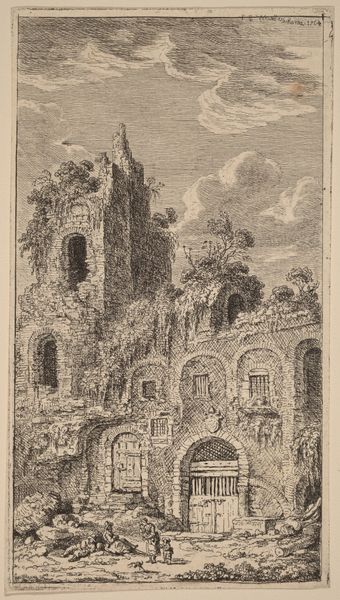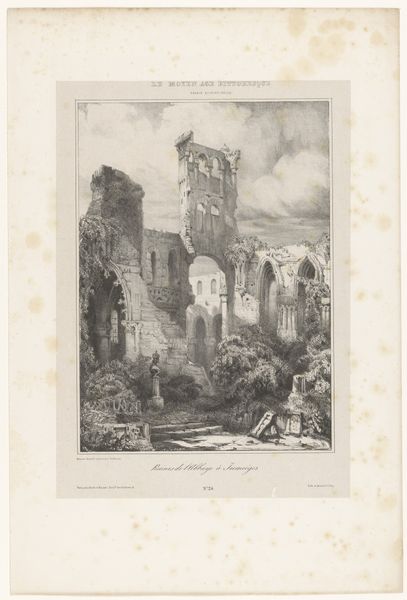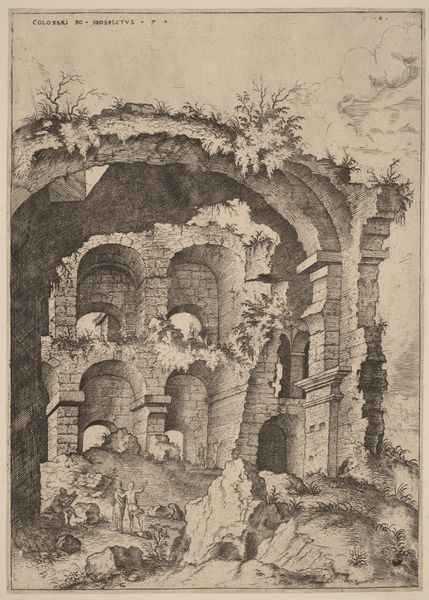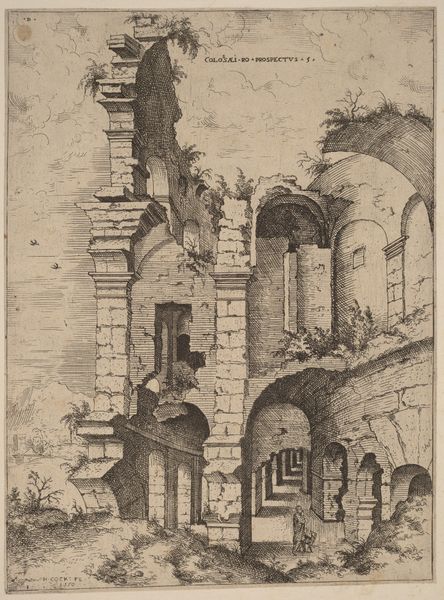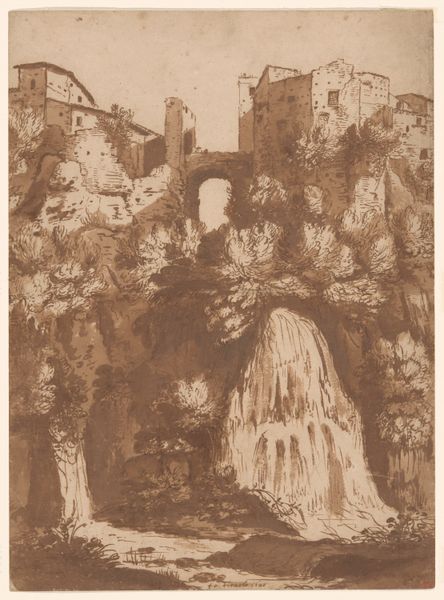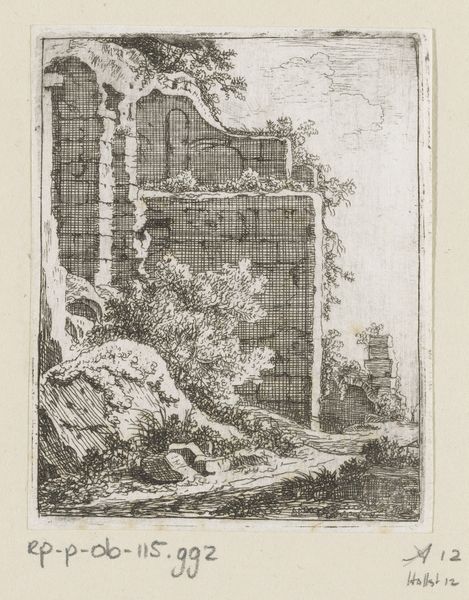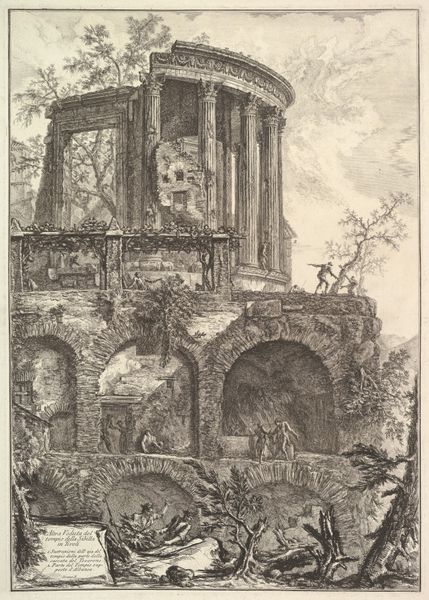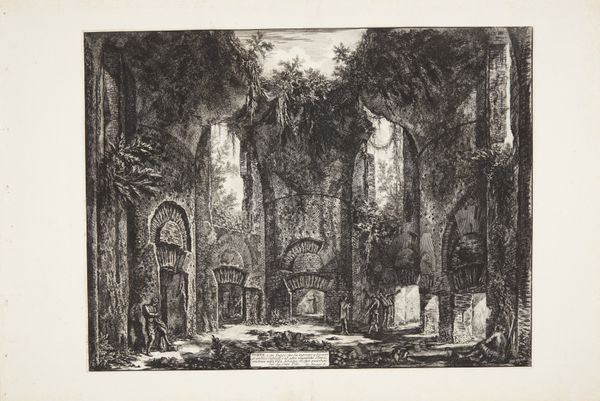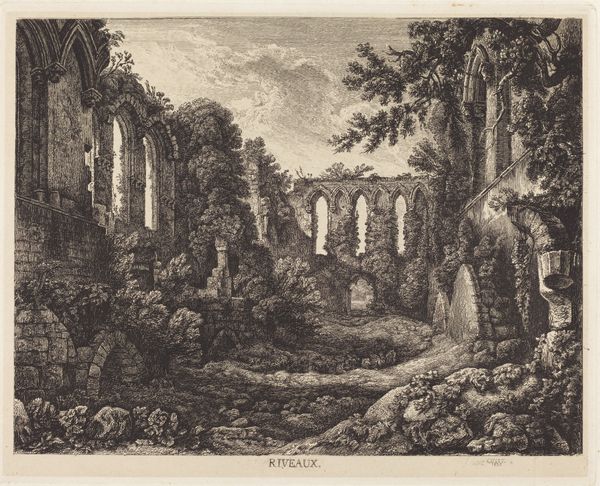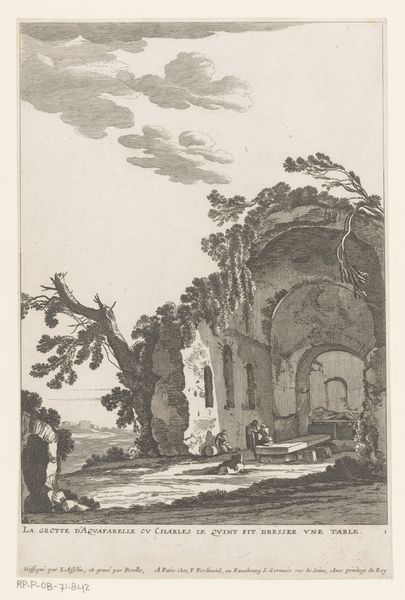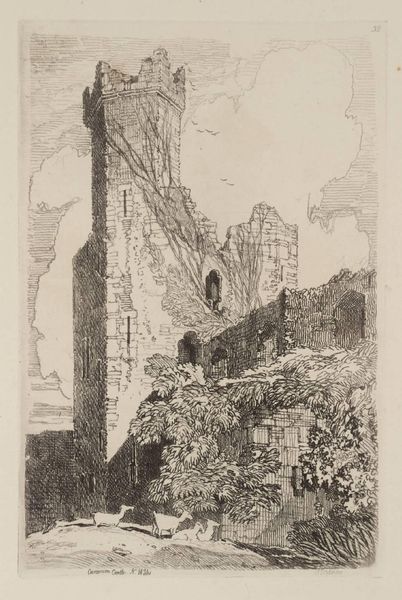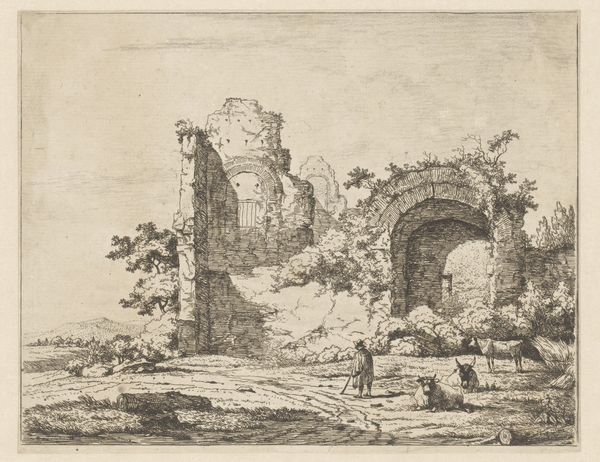
print, etching
# print
#
etching
#
landscape
#
romanesque
#
cityscape
#
history-painting
Dimensions: sheet (trimmed to plate mark): 15.5 x 10.9 cm (6 1/8 x 4 5/16 in.)
Copyright: National Gallery of Art: CC0 1.0
Editor: Here we have Franz Edmund Weirotter's "The Old Palace at Tivoli," an etching from around 1764. It’s a cityscape dominated by the skeletal remains of a grand structure, and what strikes me is the stark contrast between the imposing ruin and the small, almost anecdotal, figures at the bottom. What grabs your attention? Curator: It's interesting how Weirotter uses etching to explore the relationship between labor, material degradation, and romantic ruin. Look at the meticulous lines; they painstakingly recreate the texture of decaying stone and overgrown foliage. It invites us to consider not just the aesthetics of the ruin, but also the processes of material decay, the weathering that collapses civilizations. Consider how the etched lines *themselves* mimic that erosion. How do you think the choice of printmaking – a method of reproduction – adds to this dialogue about material and production? Editor: That’s a great point! Because prints are inherently reproducible, does Weirotter use the process to hint at cycles of construction and destruction, similar to how labor and resources enable both? Curator: Precisely! And look at the architecture—it's a constant interplay between constructed space and natural reclamation. Note the marks of tools and hands long since gone that testify to both the physical effort of construction but now is an admission that they inevitably return to raw matter. Is Weirotter critiquing or lamenting that truth? Editor: I hadn't considered the piece as a comment on cycles, but that reframes the people within it; perhaps it subtly references the enduring role of human labor in those grander schemes. Thank you for this, the materiality is actually telling a much bigger story! Curator: And hopefully, it shows that even what seems to be a picturesque scene hides a network of social and material forces. Food for thought.
Comments
No comments
Be the first to comment and join the conversation on the ultimate creative platform.
